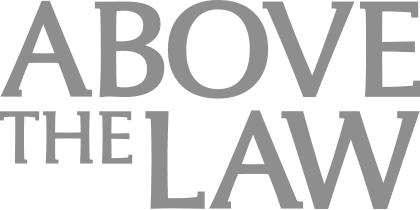Becoming A T-Shaped Lawyer: Why In-House Lawyers Should Embrace This Framework
At its core, this framework is about combining deep legal expertise with a broad set of business and interpersonal skills.
 The legal world is rapidly evolving, and staying ahead requires more than just traditional legal skills. In a recent discussion with Peter Connor, founder & CEO of AlternativelyLegal, we explored his innovative concept of the T-Shaped Lawyer — a framework that could redefine success and effectiveness for in-house lawyers. Peter’s insights offer a roadmap for becoming a more versatile and valuable legal professional in an increasingly complex corporate environment.
The legal world is rapidly evolving, and staying ahead requires more than just traditional legal skills. In a recent discussion with Peter Connor, founder & CEO of AlternativelyLegal, we explored his innovative concept of the T-Shaped Lawyer — a framework that could redefine success and effectiveness for in-house lawyers. Peter’s insights offer a roadmap for becoming a more versatile and valuable legal professional in an increasingly complex corporate environment.
Here are three key takeaways from our conversation that highlight why embracing the T-Shaped Lawyer framework is crucial for today’s legal professionals.
Law Firm Business Development Is More Than Relationship Building
1. Understanding The T-Shaped Lawyer: It’s More Than Just Skills
The T-Shaped Lawyer is a concept borrowed from other professional fields but tailored specifically for legal professionals. At its core, this framework is about combining deep legal expertise (the vertical part of the T) with a broad set of business and interpersonal skills (the horizontal part of the T).
According to Peter, a T-Shaped Lawyer is not just someone who knows the law well but is also a business person who provides business input and advice and engages in business work, not just legal work. This distinction is crucial because it shifts the lawyer’s role from being solely a legal advisor to becoming a strategic partner in the business. This approach helps lawyers add more value to their organizations by understanding and influencing broader business objectives.
2. The Importance Of Business Partnering And Leadership
Sponsored

Curbing Client And Talent Loss With Productivity Tech
Law Firm Business Development Is More Than Relationship Building

Tackling Deposition Anxiety: How AI Is Changing The Way Lawyers Do Depositions

Luxury, Lies, And A $10 Million Embezzlement
Peter introduces two critical components of the T-Shaped Lawyer framework: business partnering and business leadership.
- Business Partnering: This involves providing business advice and input in addition to legal guidance. It’s about being proactive in identifying business risks, suggesting improvements, and helping clients achieve their goals. This can be done informally and quickly, making it accessible to all lawyers, regardless of their seniority.
- Business Leadership: This is about taking on roles that influence broader business strategies. It involves identifying systemic problems within the organization, driving cross-functional collaboration, and leading projects that enhance the company’s operations and outcomes. Unlike business partnering, which is more immediate, business leadership requires a longer-term commitment and deeper engagement with business objectives.
By engaging in both business partnering and leadership, lawyers can transition from being reactive problem solvers to proactive business leaders who drive value across their organizations.
3. Why Embrace The T-Shaped Lawyer Framework?
The corporate world is experiencing what Peter describes as “discontinuous change,” where past experiences no longer serve as reliable predictors of the future. In this context, lawyers who are strictly legal experts risk becoming obsolete as technologies like generative AI increasingly automate routine legal tasks.
Sponsored

Thomson Reuters' Claims Explorer: A Powerful Tool For Legal Claim Identification


Luxury, Lies, And A $10 Million Embezzlement
The T-Shaped Lawyer framework offers a pathway to stay relevant and thrive amid these changes. By developing a broader skill set that includes business acumen, leadership abilities, and technological savvy, lawyers can enhance their adaptability and resilience. This not only makes them more valuable to their current organizations but also better prepares them for future roles in a rapidly changing legal landscape.
Taking The First Steps To Becoming A T-Shaped Lawyer
Peter suggests several practical steps for lawyers at different stages of their careers:
- Junior Lawyers. Start by adopting a businessperson mindset. Understand your organization’s business model, goals, and challenges. Begin practicing business partnering by giving business-oriented advice alongside your legal guidance.
- Mid-Career Lawyers. Engage in internal business work by supporting legal operations and identifying opportunities for process improvements. Begin exploring business leadership by taking on projects that have a broader impact on the organization.
- Senior Lawyers. Focus on strategic business leadership. Lead cross-functional teams, drive business initiatives, and mentor junior lawyers in developing a T-shaped skill set.
Final Thoughts
The T-Shaped Lawyer framework is more than a buzzword; it’s a strategic approach to legal practice that aligns legal expertise with business needs. By embracing this framework, lawyers can enhance their career prospects, add significant value to their organizations, and become indispensable business leaders.
Whether you’re just starting your career or are a seasoned in-house lawyer, adopting a T-shaped approach can help you navigate the complexities of today’s corporate environment and prepare for the future of law. For more insights on becoming a T-Shaped Lawyer and advancing your career, don’t miss our full episode with Peter Connor.
 Olga V. Mack is a Fellow at CodeX, The Stanford Center for Legal Informatics, and a Generative AI Editor at law.MIT. Olga embraces legal innovation and had dedicated her career to improving and shaping the future of law. She is convinced that the legal profession will emerge even stronger, more resilient, and more inclusive than before by embracing technology. Olga is also an award-winning general counsel, operations professional, startup advisor, public speaker, adjunct professor, and entrepreneur. She authored Get on Board: Earning Your Ticket to a Corporate Board Seat, Fundamentals of Smart Contract Security, and Blockchain Value: Transforming Business Models, Society, and Communities. She is working on three books: Visual IQ for Lawyers (ABA 2024), The Rise of Product Lawyers: An Analytical Framework to Systematically Advise Your Clients Throughout the Product Lifecycle (Globe Law and Business 2024), and Legal Operations in the Age of AI and Data (Globe Law and Business 2024). You can follow Olga on LinkedIn and Twitter @olgavmack.
Olga V. Mack is a Fellow at CodeX, The Stanford Center for Legal Informatics, and a Generative AI Editor at law.MIT. Olga embraces legal innovation and had dedicated her career to improving and shaping the future of law. She is convinced that the legal profession will emerge even stronger, more resilient, and more inclusive than before by embracing technology. Olga is also an award-winning general counsel, operations professional, startup advisor, public speaker, adjunct professor, and entrepreneur. She authored Get on Board: Earning Your Ticket to a Corporate Board Seat, Fundamentals of Smart Contract Security, and Blockchain Value: Transforming Business Models, Society, and Communities. She is working on three books: Visual IQ for Lawyers (ABA 2024), The Rise of Product Lawyers: An Analytical Framework to Systematically Advise Your Clients Throughout the Product Lifecycle (Globe Law and Business 2024), and Legal Operations in the Age of AI and Data (Globe Law and Business 2024). You can follow Olga on LinkedIn and Twitter @olgavmack.







